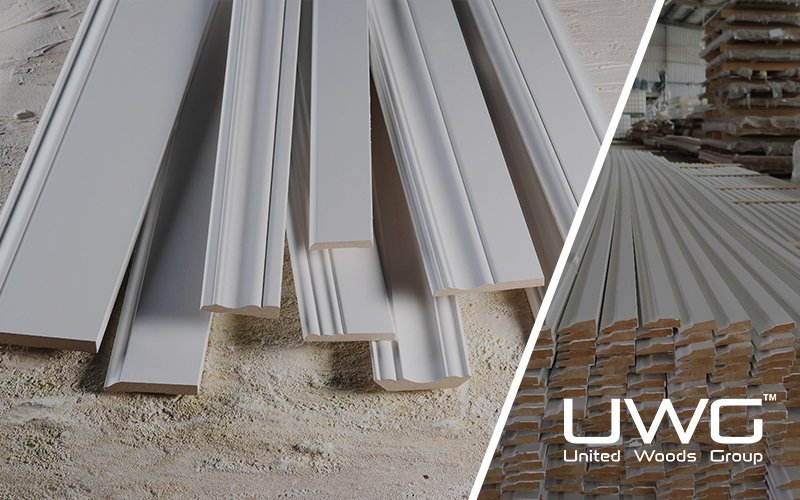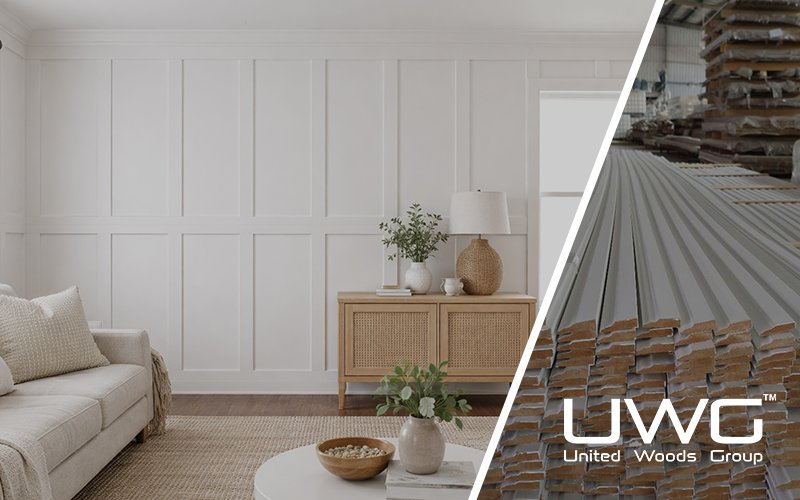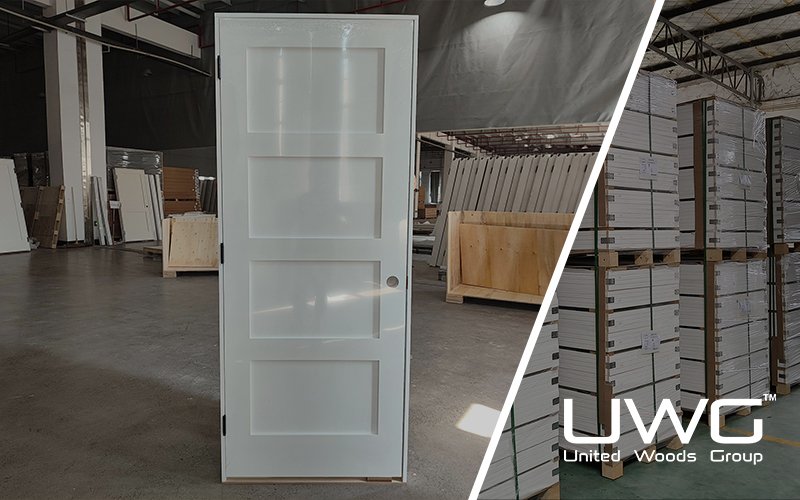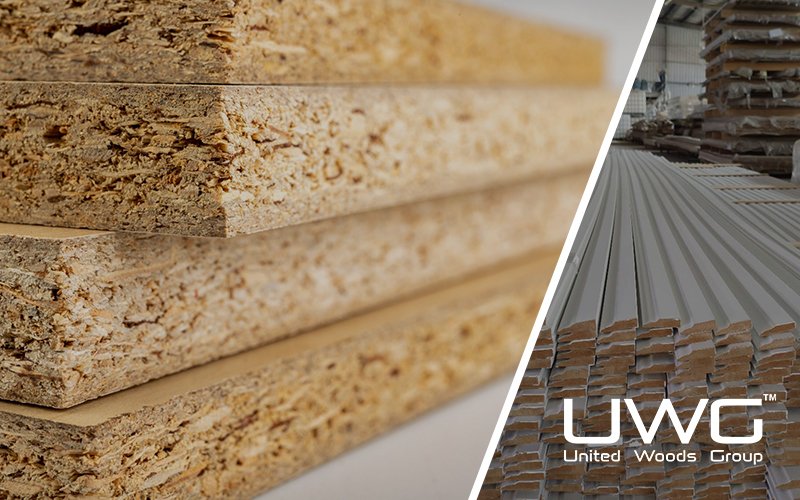Cabinet hinges are small parts that make a big difference. The wrong hinge can cause noisy doors, uneven gaps, or even damage over time. Whether you’re a builder seeking durable hardware for a client or a buyer upgrading your kitchen, knowing how to select the right hinge will save you headaches—and money.
When selecting hinges, start by identifying your cabinet type: framed cabinets have hinges mounted on the wooden face frame, while frameless cabinets have hinges attached directly to the cabinet’s side panels. Next, determine how the door overlaps the cabinet—full overlay hinges allow the door to completely cover the cabinet edges, half overlay hinges are used when two doors share the same partition, and inset hinges position the door flush with the cabinet frame. Then, choose a hinge style that matches your design preference: concealed hinges create a clean, minimalist look, semi-concealed hinges leave part of the hinge visible for a decorative accent, and exposed hinges are fully visible, offering a traditional or statement style. Finally, consider functionality: soft-close hinges ensure quiet, cushioned closing, while 165° hinges provide a wider opening angle for greater accessibility.
Now that you know the basic formula, let’s explore hinge types, identification methods, and professional buying tips so you can choose with absolute confidence.
How do I choose the right cabinet hinge?
Choosing hinges starts with three main steps:
- Identify your cabinet construction type
- Face-frame cabinets have a wooden frame around the front edges; hinges can be mounted to the frame.
- Frameless cabinets (often called European style) have no frame, and hinges mount directly to the cabinet side.
- Decide on a design style
- Concealed cabinet hinges hide the mechanism when the door is closed.
- Semi concealed cabinet hinges leave part of the hinge visible.
- Exposed hinges are fully visible and can be decorative.
- Match the hinge to your door overlay
- Full overlay cabinet hinges cover nearly the entire cabinet front.
- Half overlay hinges allow two doors to share one partition.
- Inset hinges fit doors flush with the cabinet frame.
- Add functional features
- Soft-close for quieter kitchens
- Self-closing to ensure doors latch
- 165° or specialty hinges for wide openings
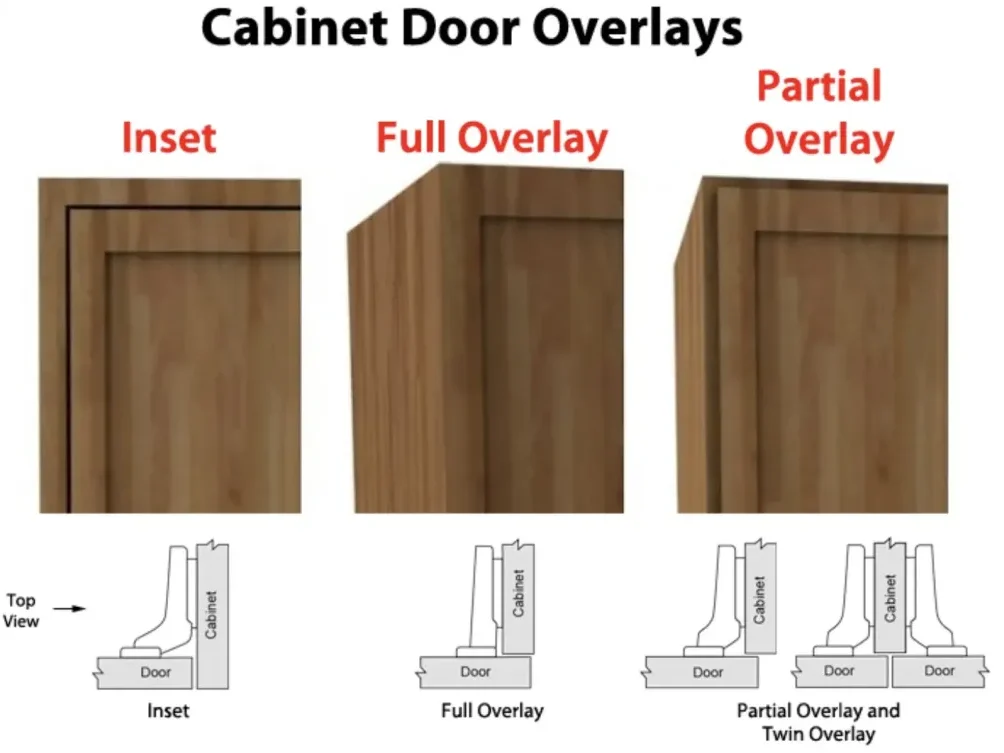
What are the common types of cabinet hinges?
Although there are dozens of subtypes, the three most common are:
- Butt hinges – Classic traditional hinges, renowned for their sturdy build. Their visible nature when doors are open adds a timeless charm, making them ideal for furniture – style cabinets, ensuring smooth operation and long – lasting support.
- Concealed hinges – These have become an absolute must – have in modern kitchen design. When the cabinet doors are shut, they vanish completely, leaving behind a clean, unbroken surface that exudes a minimalist and sophisticated charm. This invisible feature is a major selling point, as it helps create a streamlined aesthetic that’s in line with contemporary decor trends.
- No-Mortise Hinges – A style of butt hinge that minimizes the gap between the edge of the door and the cabinet. No-Mortise hinges accomplish this by folding within themselves when closed. This reduces the effective thickness of the hinge to the thickness of one leaf. This also allow the hinges to be surface mounted .
- European Hinges – A type of concealed hinge especially popular on frameless Euro-style cabinets but also available for face-frame applications. European Hinges have a mounting plate that secures to the cabinet and a cup that seats in a (typically 35mm) circular mortise drilled in the back of the door. One popular benefit of Euro-style hinges is that they offer adjustment in two and sometimes three directions, making it easy to fine-tune the alignment of the door.
- Semi-Concealed Hinge: A semi-concealed hinge is partly visible from the outside of the cabinet when the door is closed. A semi-concealed hinge may incorporate details such as a decorative ball tip or finial tip.
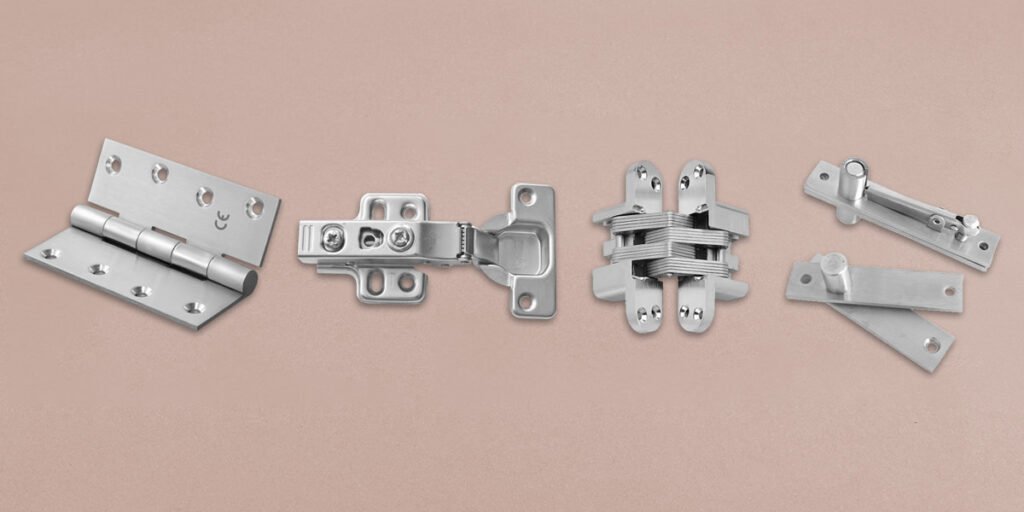
What is the best type of hinge for kitchen cabinets?
For most kitchens, soft-close concealed hinges are the top pick, and here’s why:
- Clean Aesthetic: Concealed when doors are shut, these hinges create a seamless, modern look. They blend well with various kitchen styles, from minimalist to contemporary, eliminating visual clutter and enhancing the overall design.
- Noise Reduction: The soft – close feature uses a damping mechanism to slow down doors as they close. This prevents loud slamming, making the kitchen quieter and more comfortable, especially in open – plan living spaces.
- Adjustability: Builders love them for their ability to be fine – tuned horizontally, vertically, and in depth. This ensures perfect door alignment during installation and allows for easy adjustments if cabinets shift over time due to environmental factors.
- Premium Feel: Homeowners appreciate the smooth and quiet operation, which gives cabinets a high – end, sophisticated look. It adds value to the kitchen and enhances the overall user experience.

How do I identify cabinet hinges?
Identifying an existing hinge before replacement is essential:
- Measure the hinge cup hole – Common sizes are 26mm, 35mm, or 40mm.
- Check the overlay – Measure how much the door overlaps the cabinet opening.
- Determine if it’s inset or overlay – Look at how the door sits relative to the cabinet frame.
If you’re working with old cabinet hinge types, note that some older models may be discontinued, so you may need retrofit or conversion plates.

Matching Hinges to Cabinet Styles
To make selection easy, here’s a decision guide:
| Cabinet Type | Door Style | Recommended Hinge | Notes |
|---|---|---|---|
| Face-frame | Full overlay | Face-frame full overlay concealed hinge | Adjustable, modern |
| Face-frame | Inset | Inset butt or inset concealed hinge | Requires precision |
| Frameless | Full overlay | Frameless concealed hinge | Most common in Euro kitchens |
| Frameless | Half overlay | Half overlay concealed hinge | For shared partitions |
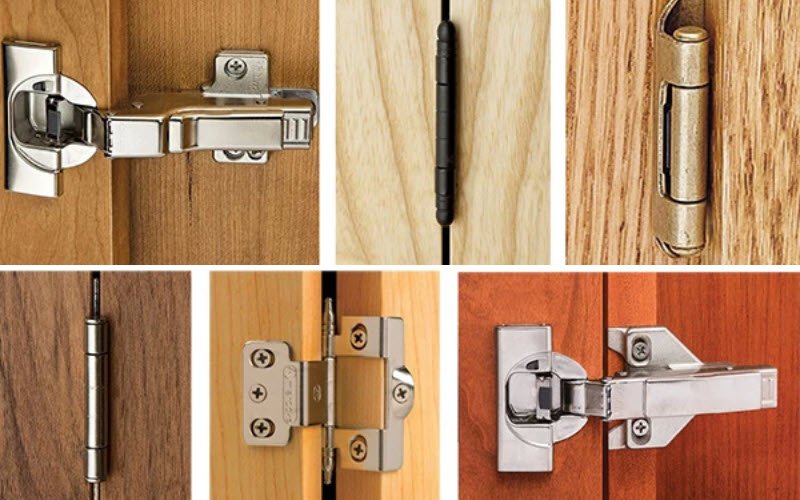
Cost vs. Durability
- Entry-level concealed hinges: $2–$4 per hinge
- Premium soft-close: $5–$10 per hinge
- Specialty or heavy-duty: $12+ per hinge
Material & Finish Considerations
- Stainless steel for moisture-prone kitchens
- Brass for decorative or vintage projects
- Nickel for a versatile modern finish
Professional Purchase Suggestions
- Where to buy:
- Big-box stores: These are ideal for those on a budget. They typically offer a wide range of standard hinge options at competitive prices, making them a convenient choice for basic kitchen or furniture hinge needs.
- Specialty suppliers: If you’re looking for premium – quality hardware, specialty suppliers are the way to go. They stock a diverse selection of high – end hinges with advanced features, unique designs, and superior materials, catering to customers with specific and high – standard requirements.
- What to check:
- Smooth motion: Ensure the hinge operates without any grinding or sticking. A smooth motion indicates proper manufacturing and lubrication, which is crucial for long – term durability and ease of use.
- Sturdy spring tension: The spring in the hinge should have appropriate tension. It should be strong enough to hold the door in place when closed and provide a gentle yet firm opening and closing action.
- Even plating/finish: Check for an even and consistent plating or finish on the hinge. This not only enhances the aesthetic appeal but also provides corrosion resistance, protecting the hinge from rust and damage, especially in humid environments like kitchens.
- Installation tips:
- Pre – drill: Always pre – drill holes before installing the hinges. This helps prevent the wood from splitting, ensuring a secure and stable attachment of the hinge to the cabinet and door.
- Use a jig: Employ a hinge cup drilling jig for accurate placement of the hinge cup. This tool guarantees precise alignment, resulting in a smooth – operating door and a professional – looking installation.
- Test door swing: Before fully tightening the screws, test the door swing to ensure it opens and closes properly. Make any necessary adjustments at this stage to avoid having to redo the installation later.

Summary
The right hinge improves cabinet life, appearance, and usability. By understanding cabinet types, overlay styles, and hinge features, you can make informed decisions—whether you’re installing hundreds for a new build or upgrading just a few in your home. A smart hinge choice now means smoother operation for years to come. Want to buy the right cabinet hinges? Contact us and let us help you.



